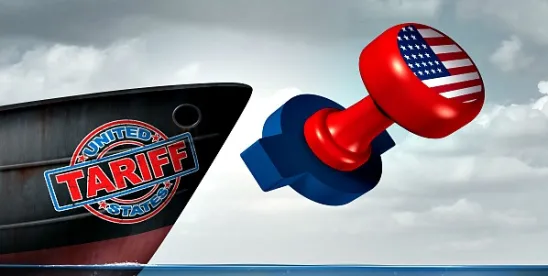Go-To Guide
- President Donald Trump has imposed new tariffs on imports from China, effective Feb. 4, 2025, adding a 10% tariff on Chinese goods in addition to existing duties.
- Shipments under $800, known as “de minimis” shipments, will no longer be duty-free if they originate from China.
- Duty drawback refunds for importers and exporters will not be allowed on the additional 10% tariffs.
- Companies are advised to review supply chains and confirm the origin, classification, and valuation of imported products, as well as revisit purchase agreements and incoterms (international commercial terms) to manage tariff responsibilities.
- China has announced tariffs on certain U.S. imported products in retaliation for the U.S. tariffs.
- President Trump had proposed an additional 25% tariff on goods from Mexico and Canada, also in addition to existing duties. However, on Feb. 3, 2025, after discussions with the Mexican and Canadian leaders, both proposals have been paused for 30 days.
- Canada had already announced its retaliation with a 25% tariff on certain U.S. exports and was offering an exclusion process, while retaliation plans from Mexico had not yet been announced.
- The dynamic nature of trade policy developments under the Trump administration, including the use of tariffs (as well as pauses or potential exclusions yet to be announced), require agility and flexibility in managing supply chain decisions.
On Feb. 1, 2025, President Trump imposed an additional 10% tariff on products of China imported into the United States, effective Feb. 4, 2025. Products in transit as of Feb. 1, 2025, are exempt from the new tariffs so long as they arrive in the United States by March 7, 2025, at 10:01 a.m. These tariffs are in addition to the general duties for imported merchandise and the Section 301 duties already imposed on most products of China. In retaliation, China has imposed a 15% tariff on liquified natural gas and coal and 10% on crude oil, farm equipment, and certain “large engine” autos. China’s countermeasures are set to take effect Feb. 10.
Pursuant to the International Emergency Economic Powers Act (IEEPA), National Emergencies Act (50 U.S.C. 1601 et seq.), Section 604 of the Trade Act of 1974 (19 U.S.C. 2483), and 3 U.S.C. 301, and referencing the “influx of synthetic opioids” from China, President Trump imposed the supplemental duties in an executive order1 that included all goods from China. Unlike under the first Trump administration, to date, no exclusion process has been announced that would enable importers to apply for specific exclusions to the additional tariffs.
Takeaways from the executive order:
- Imports into the United States under $800, known as “low value” or “de minimis” shipments under 19 U.S.C. 1321, will no longer be duty free, but are included in the additional duties if the country of origin is China.
- Duty drawback, which enables importers and exporters to recover already paid duties, will not be allowed on the 10% tariffs.
- For shipments going to a foreign trade zone (FTZ), the date of arrival of shipments into the FTZ will be the date that determines any owing duty when the merchandise enters the commerce of the United States. This callout for FTZs obviates one of the major benefits of using an FTZ.
- Should China retaliate against the United States in response to this action, the Trump administration announced it may increase or expand in scope the duties imposed under the executive order.
- To qualify for the “in transit” exception, goods must be “in transit on the final mode of transport prior to entry into the United States before 12:01 a.m. on Feb. 1, 2025, and arrive in the United States by March 7, 2025.
- The executive order is silent as to the status of the Section 301 exclusions still in place, so those exclusion orders may remain valid. All current exclusions expire in May 2025.
Companies importing into the United States, whether U.S. or multinational companies, should consider increasing visibility into their supply chains. Importers may wish to review each imported product and confirm its country of origin, classification, and valuation. For example, even if a purchase agreement states a certain country of origin, U.S. companies should consider confirming the bill of materials and production steps to ensure the product is in fact manufactured there and not merely assembled in that country.
In addition, U.S. importers should consider reviewing incoterms on all purchase orders to determine which party is responsible for the tariffs. Note that tariffs are assessed based on the date of entry of goods into the United States and not the purchase order date. If negotiating a master purchase agreement, importers may wish to add language so that the purchase price does not include the additional duties.
There are numerous duty-mitigation strategies importers can consider to potentially blunt the impact of increased costs, including the use of “first sale” in a multi-tier transaction. Imported merchandise may have been the subject of more than one sale, with the middleman buyer adding an amount for profit and expenses to the price paid by the U.S. importer at entry. For example, merchandise may be manufactured in China, sold to a middleman in Hong Kong, and then sold to a buyer/importer in the United States. Under certain circumstances, importers may declare the value of the goods on the “first” or earlier sale, rather than on the last one, thereby reducing the declared value of the goods upon which duty payments are based. In addition, importers may consider taking legal deductions from the declared value, such as foreign inland and international freight.




 />i
/>i
